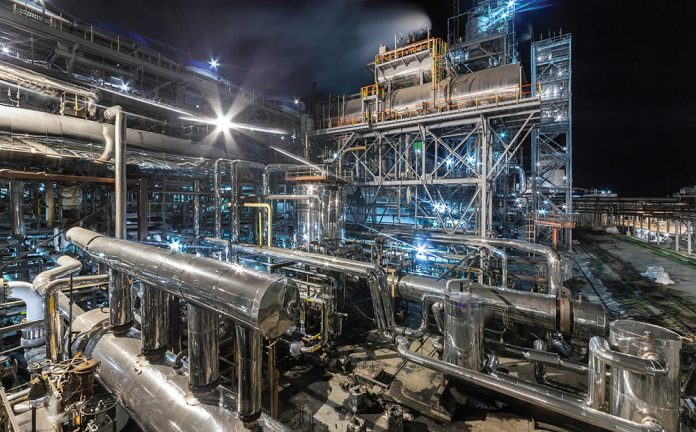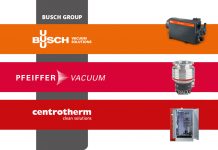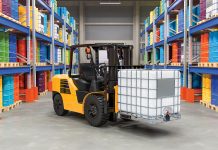Can chemical companies continue operating in Europe? Global management consultancy McKinsey outlines the intrinsic strengths they can build on, and the steps needed to maintain competitiveness.
The global chemical industry is going through difficult times. Geopolitical tensions, inflation, sustainability pressures, supply-chain interruptions, and demographic challenges have greatly complicated its operations. On top of these issues, prices of natural gas – the primary feedstock for the industry – have risen 420 percent compared with average prices in Europe in 2010 to 2020. Meanwhile, Asian and North American markets have faced significantly lower increases of about 105 percent and up to 50 percent, respectively. The current level of gas prices is putting the competitiveness of the European chemical industry at risk. The cost of materials and labour is increasing throughout the industry and EBITDA margins are declining, though diversified companies are less exposed to this effect. Several commodity chemicals companies have already started to reduce or shut down production capacity in Europe. Further, gas shortages are likely to persist until 2025. While gas prices are expected to fall from current levels, they could remain above pre-crisis levels with continuing high volatility.
Sources of competitiveness for Europe
While Europe has been disadvantaged historically in terms of feedstock, labour cost, and capital, its chemical industry has done remarkably well.
In the 20 years from 2000 to 2020, the European chemical industry has delivered the same total return to shareholders (TRS) as its North American counterparts, and a higher TRS than its Asian ones. The lower capital cost in Asia has been driven by overall higher subventions. The European chemical industry has only fallen behind since 2020, when natural gas prices began rising even before the Russian invasion of Ukraine.
So, if the European chemical industry has lacked a structural advantage, why has it been doing so well? And can the sources of this strength be leveraged in the future?
Sustainability
The EU is at the forefront of global sustainability efforts. Under its “Fit for 55” strategy, the EU Commission has presented a package of policy reforms, guidelines, and regulations to support the implementation of the European Green Deal. Included in the package is the “Chemicals Strategy for Sustainability.” This forms part of the EU’s goal of a toxic-free environment by 2050 and sets the long-term vision for the EU chemicals policy. These regulatory initiatives, along with changing expectations from consumers, have prompted many of the top 20 to 30 players in key end-use sectors for the chemical industry to set ambitious science-based sustainability targets.
How European chemical companies can remain competitive
Continuing to operate in the same way that they have for the past 20 years—that is, cutting costs to remain competitive—will not be enough. It will require a transformation and redefinition of the industry, and fast execution and agility. We look at what European chemical companies can do to remain competitive through a short-, medium- and long-term lens.
Short term
Renew functional excellence. Natural gas prices are expected to fall by 2026, but, even then, they may remain above historical averages. Under these circumstances, European businesses would do well to be at the forefront of efficiency and effectiveness to achieve a solid and stable base on which to build other initiatives.
Our experience shows that chemical companies can save up to 10 to 20 percent on energy spending and 10 to 40 percent on the energy they use, while achieving up to 10 to 20 percent in throughput improvements and 10 percent in yield increases. Achieving these targets would require a rigorous focus on improving performance and embracing the latest approaches in digitisation, analytics, and enterprise agility.
Strengthen resilience in the physical supply chain. This includes securing access to energy through a combination of contractual and physical hedging, as well as gaining access to raw materials and identifying critical alternative feedstocks.
Review the existing strategy considering current value-pool shifts. The changes in energy supply, sustainability regulations, global supply chains, and other factors could spur a major shift in value pools. Decarbonisation of power, low-carbon mobility, circular products and packaging, and low-carbon agriculture and food supply are just a few of the new value pools.
We estimate that each of these areas could generate market sizes of $500 billion to $1 trillion by 2025, and each one could require new chemical products. Companies can consider reassessing their product portfolios—what to keep, what to decarbonise, what to relocate, and what to sell.
Identify new business-building opportunities. Developing new sustainable solutions will require not only decarbonising existing assets but also building new greener businesses. Scaling these will take time and the full top- and bottom-line impact will only become apparent in the middle to long term. Therefore, it will be important to identify opportunities, develop business blueprints, and design ambitious scale-up plans early on.
Medium term
Decarbonise operations. European companies will have to decarbonise their own operations, both for compliance reasons and to satisfy their customers’ needs. They will also have to build and start to scale new businesses. Analysis shows that leaders in green business building share several key success factors:
They lead with a game-changing ambition, balanced with speed and execution.
In many cases, there are long-term offtake agreements and even invitations to customers to invest in the business upfront to further align interests.
They secure a cost advantage by identifying a scaling breakpoint to reach viability quickly.
They assess technological pathways for maturity and performance at scale before committing bigger resources.
They create business ecosystems by collaborating with players in the value chain.
Develop functional capabilities. European companies can consider upgrading their capabilities in pricing, branding, marketing, and go-to-market to capture premiums for sustainably made chemical products. Market indications are that temporary premiums will be available, given expected green chemical supply shortages due to high demand from consumer and automotive companies. But being a first mover will be critical as green resources, like renewable feedstock, may be scarce. Industry consolidation and M&A could also improve competitiveness through synergies and economies of scale.
Long term
Europe’s chemical companies should consider doubling down on green business building and partnerships to capture new value pools while strengthening positions in attractive value chains. Chemical players have a variety of investment options from which to choose to strengthen and maintain their competitiveness, especially in areas like decarbonisation and circularity. A knowledge advantage in decarbonisation, toxic-free environments, and sustainability commercialisation can become a competitive strategic advantage as regulations catch on in other geographic markets.
A strong chemical industry is vital for Europe, and Europe is vital for the chemical industry and its sustainable transition. So it is imperative that companies begin reflecting on short-, medium-, and long-term efforts to secure their competitiveness. The sector can strive to build on Europe’s intrinsic strengths, operate at the leading edge of efficiency, and explore new growth avenues. If the industry does so, European companies can remain competitive while leading the way toward a more sustainable chemical industry.










